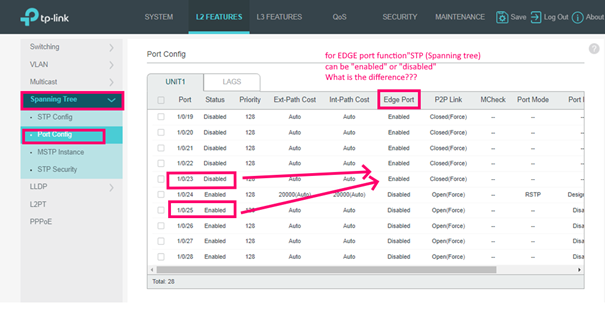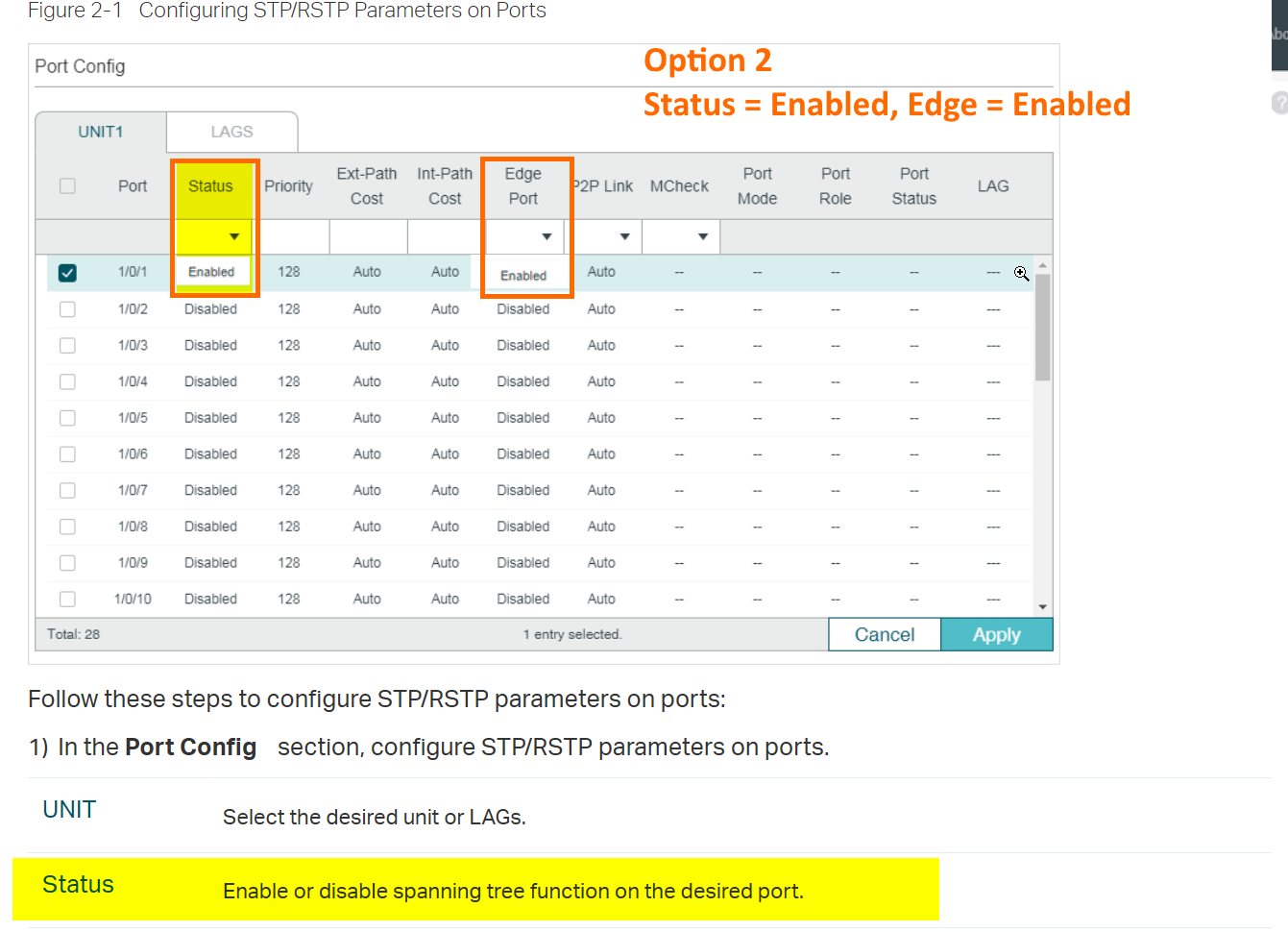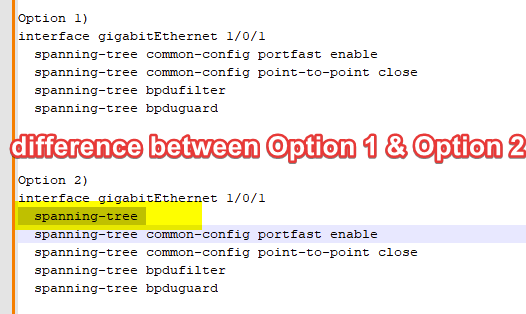TP-Link Spanning Tree (RSTP) config
Hi!
I have four SG3428 TP-Link switches. I am configuring the RSTP protocol on these devices.
I found that the “STP” option can be enabled globally and also on a per-port basis.
Could you please tell me what the “STP: Enable/Disable” option for each port configured as “EDGE” is for?
Does this option have any real impact on the functions of the switch?

- Copy Link
- Subscribe
- Bookmark
- Report Inappropriate Content
gawkla wrote
I have run some tests and it appears that both options are working well. Even if the STP tree was changed, the two devices can continuously ping each other without loosing even one ping. Therefore, Edge=Enabled (portfast) seems to be sufficient for configuring an edge port. Isn't it?
STP enabled, and Edge enabled, should be the proper syntax we look for if you ask me about it.
You can also try the commands to output the STP status.
STP enabled is a global setting. We usually require a port-level config to enable/disable a function per port.
So, I think it is necessary.
- Copy Link
- Report Inappropriate Content
- Copy Link
- Report Inappropriate Content
I read this article, but I couldn't find the answer to my question.
- Copy Link
- Report Inappropriate Content
I found another article on the subject but it too will probably not answer your question.
In taking another look at your initial post, it appears that the switch is standalone mode as that screen is not available when using a controller. In that case, if there is a global STP setting, it probably enables STP on the switch. Then each port can have STP enabled or disabled, depending on whether it is being used as an access port or trunk port. Otherwise, the switch has no way of knowing what the port is used for. The fifth paragraph in the article gives some info on the reasons for enabling/disabling.
Perhaps someone from Tp-LInk can share some more information on this.
- Copy Link
- Report Inappropriate Content
- Copy Link
- Report Inappropriate Content
gawkla wrote
In my opinion, the 'function' of the port is defined by 'edge: disable/enable [portfast]' and 'P2Link' (closed/open/auto). I am trying to understand what the additional STP enable/disable per port is used for.
In your original post, I see you are looking for the explanation of the "edge".
So, are you trying to understand the whole concept of the STP?
Or you want to figure out the single term "edge"?
For both, you can refer to the general Wikipedia for help and explanation. These are industrial standards and terminology.
- Copy Link
- Report Inappropriate Content
Edge port is the TP-Link equivalent of Cisco’s spanning-tree portfast.
It tells the switch that the port is connected to a non-switching device (like a PC or printer), allowing it to immediately enter the forwarding state by skipping the usual STP listening and learning phases.
BPDU Guard should be enabled alongside Edge Port as a best practice to protect the network by shutting down the port if any BPDU packets are received, preventing potential loops caused by unauthorized switches.
With the BPDU protect function enabled, the port will set itself automatically as ERROR-PORT when it receives BPDU packets, and the port willdisable the forwarding function for a while.
- Copy Link
- Report Inappropriate Content
I understand what an edge port is. My question was about enabling/disabling STP for each edge port at the port level.
Perhaps I should ask my question differently. Please see the attached pictures. Option 1 and Option 2. Which one is correct? What will happen if I set the port as 'Edge=Enabled' but 'Disable' STP Status?



- Copy Link
- Report Inappropriate Content
- Copy Link
- Report Inappropriate Content
- Copy Link
- Report Inappropriate Content
gawkla wrote
I have run some tests and it appears that both options are working well. Even if the STP tree was changed, the two devices can continuously ping each other without loosing even one ping. Therefore, Edge=Enabled (portfast) seems to be sufficient for configuring an edge port. Isn't it?
STP enabled, and Edge enabled, should be the proper syntax we look for if you ask me about it.
You can also try the commands to output the STP status.
STP enabled is a global setting. We usually require a port-level config to enable/disable a function per port.
So, I think it is necessary.
- Copy Link
- Report Inappropriate Content
Information
Helpful: 0
Views: 943
Replies: 10
Voters 0
No one has voted for it yet.
